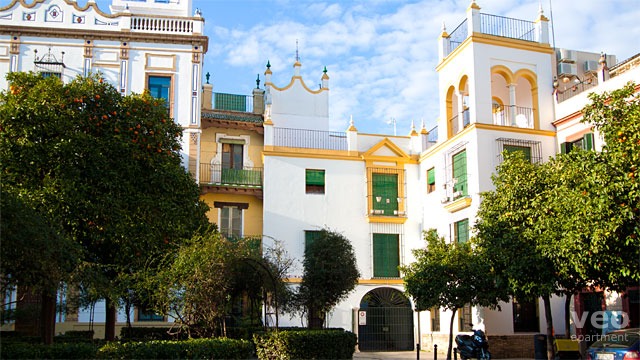 Plaza Santa Cruz
Plaza Santa Cruz
Seville is said to have the largest preserved historic centre of any city in Europe, and the old core of the city is the neighbourhood of Santa Cruz, also known as the old Jewish quarter. Today it’s the most picturesque part of the city and a major tourist attraction, and although it’s not large, it’s easy to get lost in the labyrinth of narrow streets and small squares, which have been inhabited since Roman times and even earlier. Julius Caesar, who was governor here in the 1st century BC before going on to invade Britain and meet his fate on the Ides of March, is credited as being one of the founders of the city, because he built the first stone walls around it.
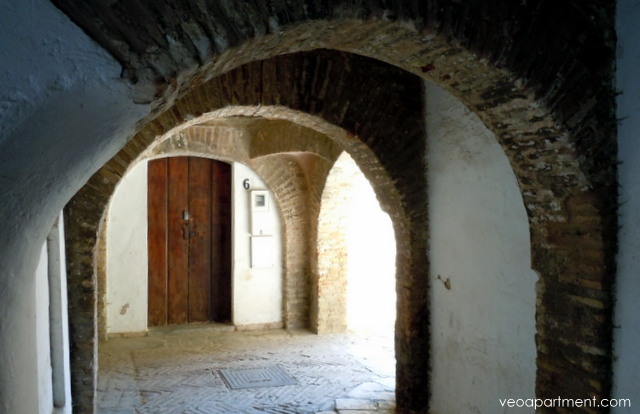 entrance to the Judería (Jewish quarter)
entrance to the Judería (Jewish quarter)
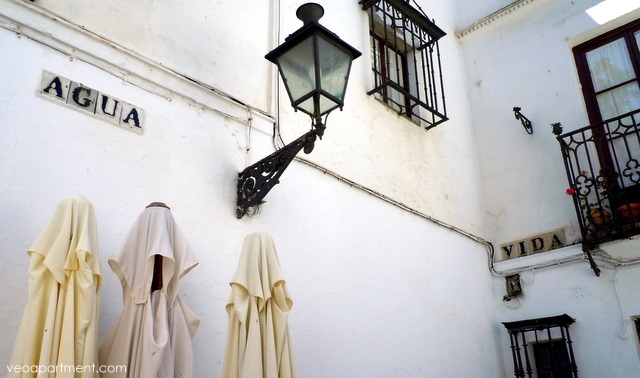 the corner of Agua & Vida (Water & Life)
the corner of Agua & Vida (Water & Life)
Although it has become rather touristy, with a lot of souvenir shops of variable quality, the Santa Cruz is still, with good reason, one of the places people come to Seville to see. It’s greatest treasure is probably the little plazas that are scattered through it, many of them of exceptional charm. My personal favourite is the elegant yet cosy Plaza Doña Elvira with its ceramic benches, fountain and orange trees, probably my favourite square in Seville. It’s also the supposed birthplace of Doña Inés de Ulloa, the impossible love of Seville’s favourite son, Don Juan. Don Juan’s statue can be found nearby in another classically pretty square, the Plaza de Los Refinadores, notable also for its palm trees and circular benches and the house with the huge glassed in corner balcony, designed by Anibal Gonzalez, who also designed the famous Plaza España. The Plaza Santa Cruz is the site of the original parish church, and before that of one of the Jewish synagogues, burned down in the pogrom of 1391. The painter Bartolomé Murillo is buried somewhere in the square, which now has its centrepiece the curious wrought iron sculpture known as the Locksmith’s Cross, moved here from its original location in Sierpes Street in 1921 as part of the urban renovation leading up to the 1929 exhibition. Other plazas include Los Venerables, bustling with bars and restaurants, Las Cruces with its three crosses, and the Plaza Alianza, once called the Plaza of the Dry Well.
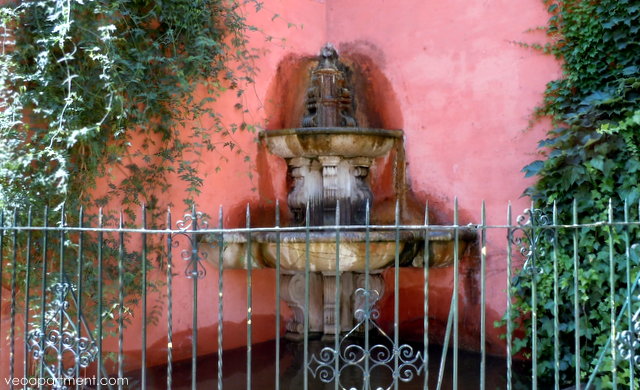 fountain against the Alcázar wall in calle Judería
fountain against the Alcázar wall in calle Judería
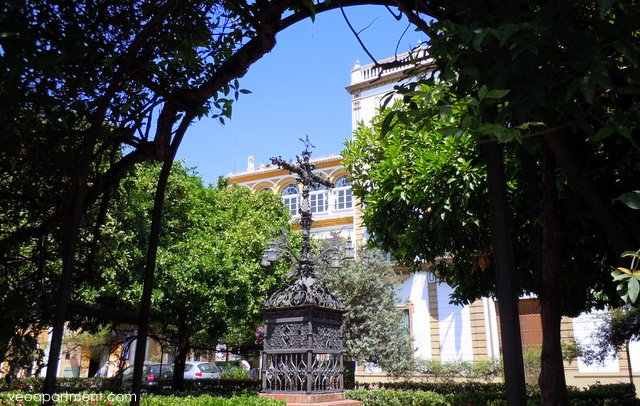 the Locksmith’s Cross in Plaza Santa Cruz
the Locksmith’s Cross in Plaza Santa Cruz
The narrow streets that wind from plaza to plaza help to block out the intense heat of the summer sun, keeping them at least relatively cool. Look for the tilework that adorns the undersides of many of the balconies and the seriously big wooden doors that guard the entrances to the most important buildings. If they’re open take a peek inside – there’s almost always one of those cool courtyards otherwise hidden from the world. Pay your respects to Susona Ben-Suson in the street of the dead, and pause a moment in Calle Fabiola by the last small remaining section of the wall that separated the Jewish quarter from the rest of the city. Last, but by no means least, spend some time in the bars with the locals, enjoy some tapas and a glass of wine or two. Bar Las Teresas and Casa Roman, both in the heart of the barrio, are two of my favourites for both quality and authentic atmosphere.
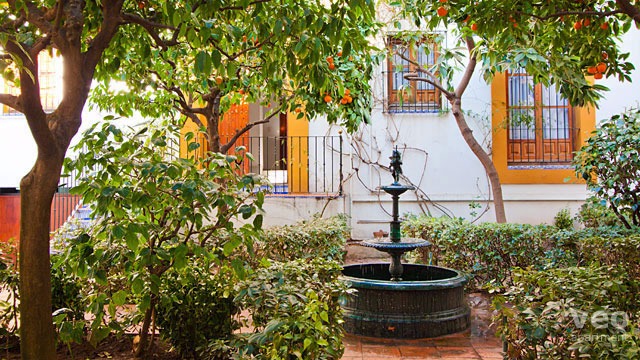 courtyard of our Plaza Santa Cruz B apartment
courtyard of our Plaza Santa Cruz B apartment
Perhaps surprisingly, it’s not hard to find apartments for rent for a reasonable price in this part of the city, which is also handy for shops, markets and the main monuments. And it’s all so quintessentially Spanish!
I stayed in Barrio Santa Cruz for 6 days last year and absolutely loved it,by myself getting lost among the small streets then finding some quiet ( or noisy ) bar,never felt uneasy or threatened i can`t wait for next September when i will return.